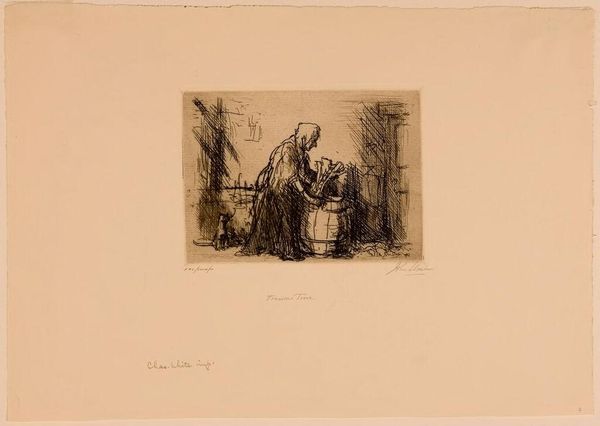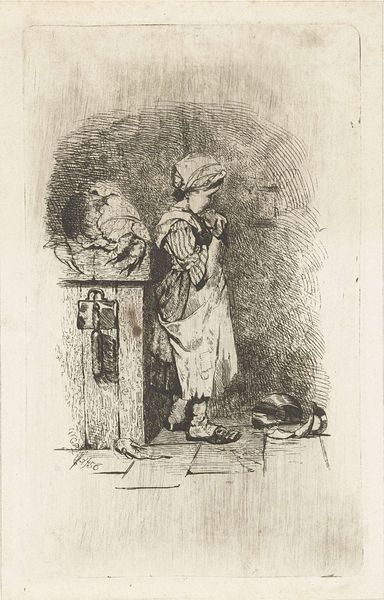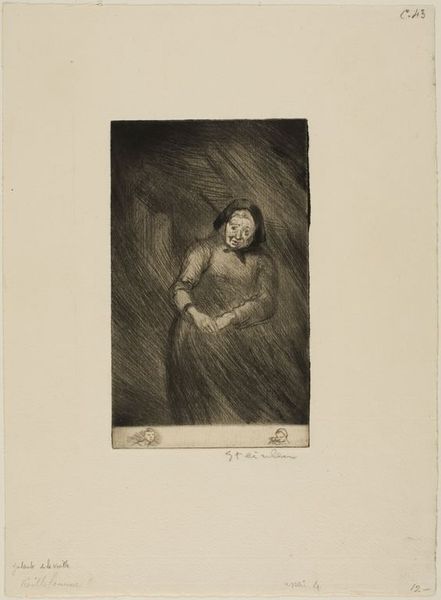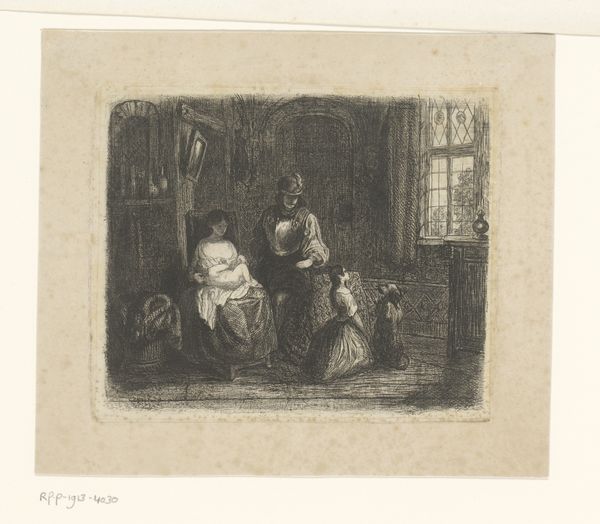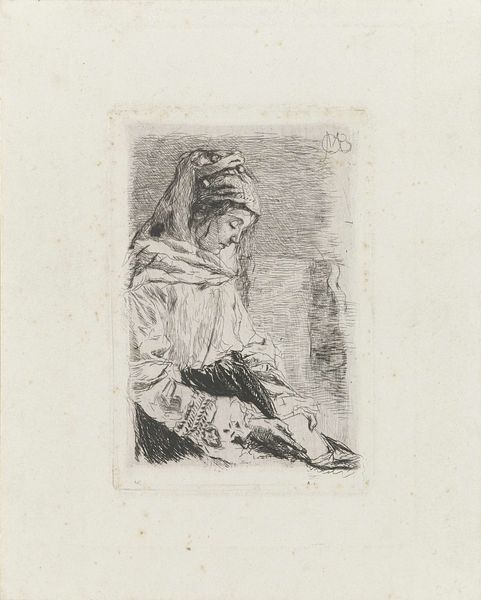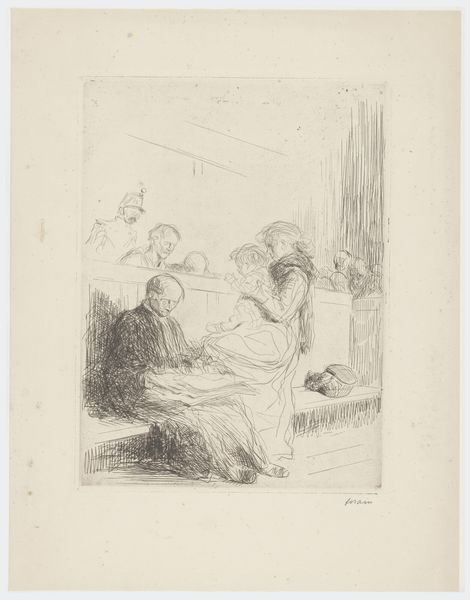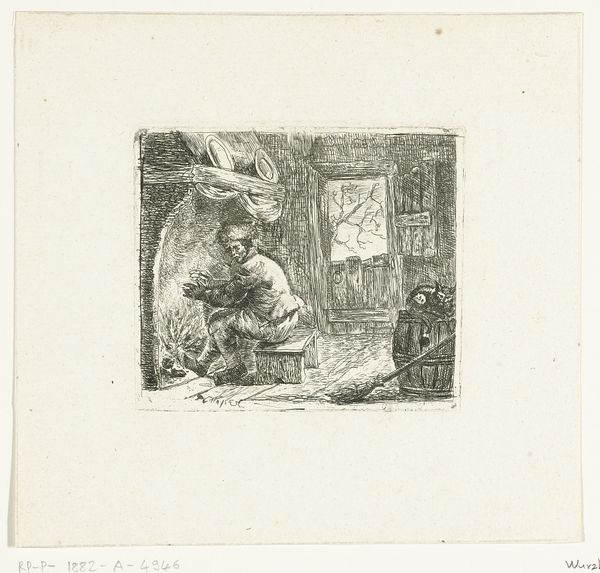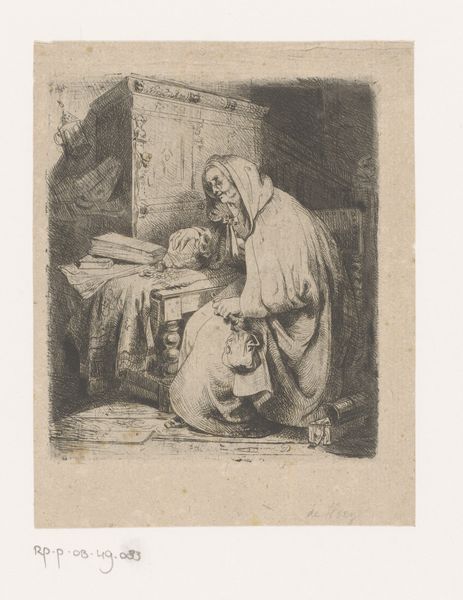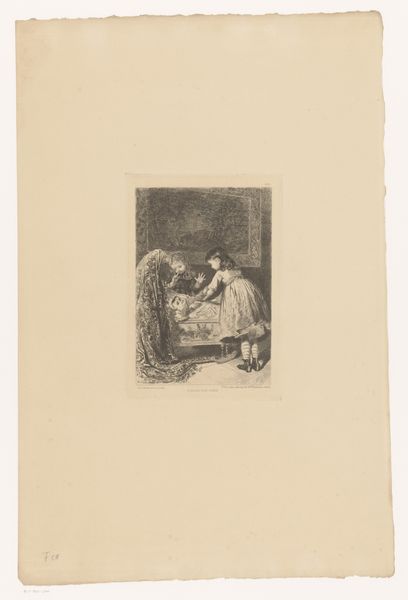
Dimensions: 3 3/4 x 5 1/4 in. (9.53 x 13.34 cm) (image)8 3/16 x 9 9/16 in. (20.8 x 24.29 cm) (sheet)10 1/8 x 11 3/4 in. (25.72 x 29.85 cm) (mat)
Copyright: No Copyright - United States
Editor: Here we have John Sloan's etching "Treasure Trove," created in 1907. There's a definite sense of intimacy in this genre scene, like we're peeking into a private moment. It is also somewhat mysterious. What do you read into this image? Curator: What strikes me is how Sloan depicts labor. Genre painting often romanticized work, but here, the woman is presented without idealization. Consider the cultural context: this was a period of intense social and economic upheaval. Sloan, aligned with the Ashcan School, actively sought to portray urban realities and the lives of everyday people, especially the working class. Editor: So, it's a conscious effort to represent a segment of society that wasn't typically visible in art? Curator: Exactly. And the 'treasure' itself becomes a commentary. What is she holding? Is it merely discarded paper? It might symbolize something considered worthless by the elite. Also, it looks like her only company is a dog. Think about it; what statements might the artist be making about urban poverty at that time? Editor: I guess the value assigned to 'treasure' is being questioned in some ways... and who gets to define what is considered important. Also, by sharing the interior, Sloan makes visible someone who is generally invisible, living a very private and constrained life. Curator: Precisely. And that visibility becomes a social act. Museums choose art to share these lives with audiences. So, where does this change your perspective of museums in a social and cultural setting? Editor: It shows how artworks reflect power relations and the agency of different social classes, making a trip to the museum more engaging than I ever imagined! Curator: Exactly.
Comments
No comments
Be the first to comment and join the conversation on the ultimate creative platform.
